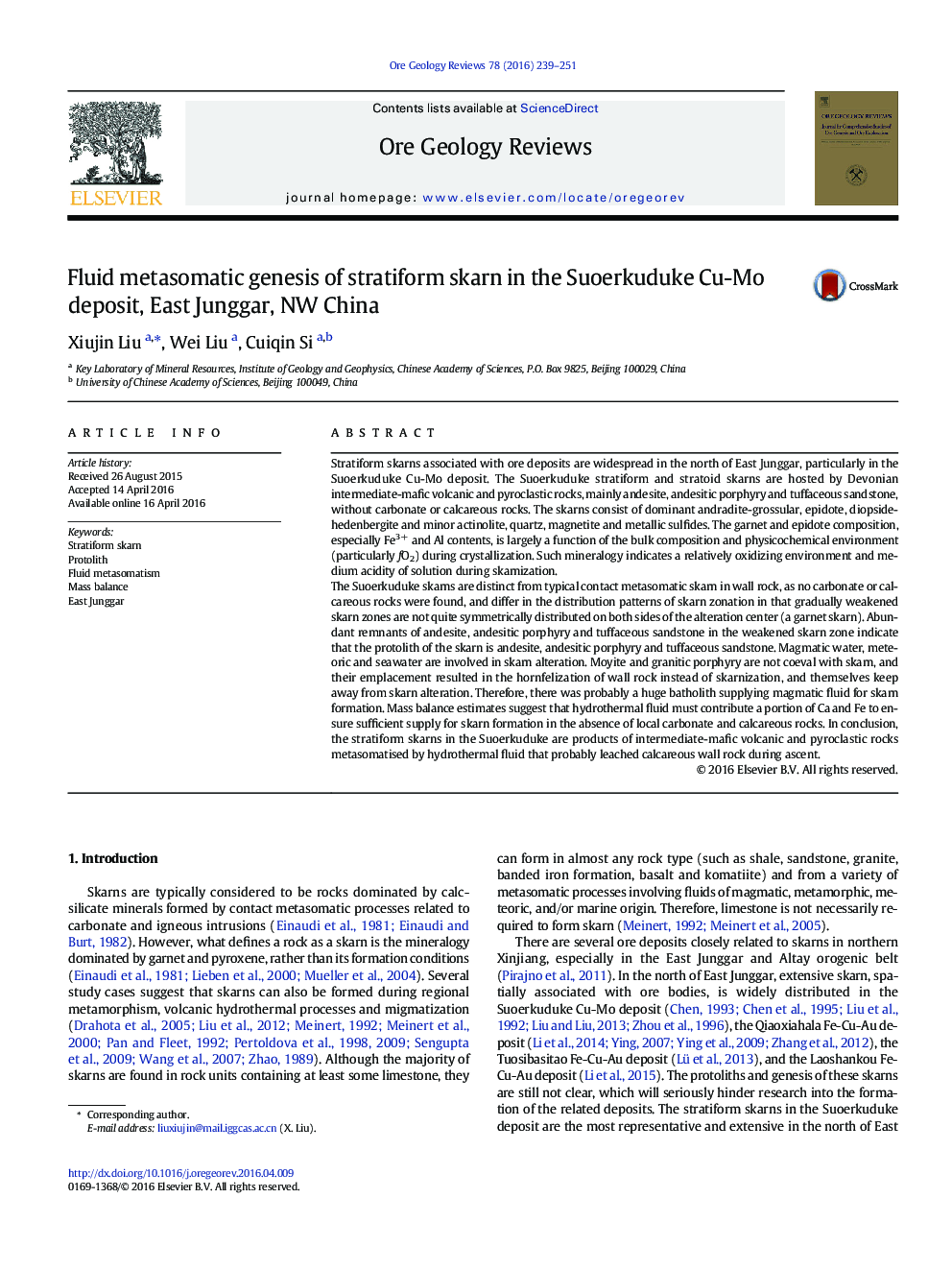| کد مقاله | کد نشریه | سال انتشار | مقاله انگلیسی | نسخه تمام متن |
|---|---|---|---|---|
| 4696850 | 1637228 | 2016 | 13 صفحه PDF | دانلود رایگان |

• Stratiform skarn is distinct from contact metasomatic skarn in wall rock and zonation.
• The protolith is intermediate-basic volcanic and pyroclastic rocks without carbonate.
• No granitic outcrop coeval with skarn implies that a batholith supply fluid.
• Hydrothermal fluids also supply a fraction of Ca and Fe to ensure skarn formation.
• Stratiform skarns are metasomatic products of protolith by hydrothermal fluid.
Stratiform skarns associated with ore deposits are widespread in the north of East Junggar, particularly in the Suoerkuduke Cu-Mo deposit. The Suoerkuduke stratiform and stratoid skarns are hosted by Devonian intermediate-mafic volcanic and pyroclastic rocks, mainly andesite, andesitic porphyry and tuffaceous sandstone, without carbonate or calcareous rocks. The skarns consist of dominant andradite-grossular, epidote, diopside-hedenbergite and minor actinolite, quartz, magnetite and metallic sulfides. The garnet and epidote composition, especially Fe3 + and Al contents, is largely a function of the bulk composition and physicochemical environment (particularly fO2) during crystallization. Such mineralogy indicates a relatively oxidizing environment and medium acidity of solution during skarnization.The Suoerkuduke skarns are distinct from typical contact metasomatic skarn in wall rock, as no carbonate or calcareous rocks were found, and differ in the distribution patterns of skarn zonation in that gradually weakened skarn zones are not quite symmetrically distributed on both sides of the alteration center (a garnet skarn). Abundant remnants of andesite, andesitic porphyry and tuffaceous sandstone in the weakened skarn zone indicate that the protolith of the skarn is andesite, andesitic porphyry and tuffaceous sandstone. Magmatic water, meteoric and seawater are involved in skarn alteration. Moyite and granitic porphyry are not coeval with skarn, and their emplacement resulted in the hornfelization of wall rock instead of skarnization, and themselves keep away from skarn alteration. Therefore, there was probably a huge batholith supplying magmatic fluid for skarn formation. Mass balance estimates suggest that hydrothermal fluid must contribute a portion of Ca and Fe to ensure sufficient supply for skarn formation in the absence of local carbonate and calcareous rocks. In conclusion, the stratiform skarns in the Suoerkuduke are products of intermediate-mafic volcanic and pyroclastic rocks metasomatised by hydrothermal fluid that probably leached calcareous wall rock during ascent.
Figure optionsDownload as PowerPoint slide
Journal: Ore Geology Reviews - Volume 78, October 2016, Pages 239–251